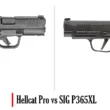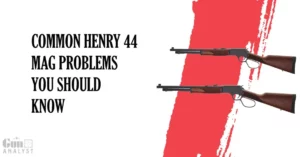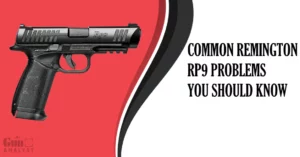The Remington 742 rifles are stunning. The Woodmaster ones in .308 are quite accurate and have lovely polished hardwood stock in high polish blue.
However, as with all guns, it has some problems. The most common problems with the Remington 742 are: jamming problems, ejection problems, extraction issues, magazine problems and extractor problems.
I will give you the solution to these common Remington 742 issues in this article. Additionally, you will get authentic reviews from users as well. So, stay tuned!
Features & Specifications of Remington 742:
Action: Gas operated, Semi-automatic.
Caliber: .243 Winchester, 6mm Remington etc.
Product weight: 7.5 lb
Product length: 42 inches
Capacity: 4 rounds
Stock: Wood
Barrel length: 22 inches

Common Remington 742 Problems and Solutions
| Problems | Solutions |
| Jamming Problems | Keep the gun clean and use proper ammo and cartridges. |
| Ejection Problems | Clean the gun. |
| Extraction Issue | Use proper ammo, and troubleshoot forestock. |
| Magazine Problem | Change with aftermarket magazine, clean the magazine. |
| Extractor Problem | Replace the extractor. |
Jamming Problems
Remington 742s are known for having a rear bolt jam that harms the receivers. Primarily with long cartridges like 30-06, .270, and less frequently with shorter cartridges like .308 or .243.
Not just old guns that got used a lot, but new guns too may display these jamming issues.
The Fix
Due to its semiauto design flaw, the 742 is infamously sensitive to powder performance. It is also very picky regarding total cartridge length and cartridge specifications.
Always use factory loads of high quality. Before firing, make sure you field strip and clean the rifle. Additionally, it needs to be cleaned after intervals.
Because the main causes of these clogs are dirt and prolonged use. Take it to a Remington authorized gunsmith if everything else fails.
Ejection Problems
The 742 won’t throw the shells out. The extractor rips a chunk off of the rim. Because the extractor attempts to chamber a new round while the old shell is still inside.
The Fix
Remove all oil and debris from the chamber before using it. Because the gun has a tight chamber and can get easily dirty due to a design flaw.
The inertia block and the tension of the recoil spring are the sources of the issue. The used cartridge can’t finish burning before the bullet leaves the barrel. It is because the fired cartridge extracts too quickly.
As a result, the chamber is left with unburned powder, flakes, and flash residue. The chamber is also rough due to the round rotating before ejection.
Accuracy Issues
To some, the gun proves to be very accurate with 1 MOA. To others, the gun is less accurate, with more than 2-3 inches of target groups.
The Fix
Try the fantastic deer bullets from Rem 180gr Soft Point round nose. Remove the forestock and align the back end with the action where it fits.
If there is still room, you can additionally bed the forestock’s back or squared end. To ensure that the barrel is not touched by any of the forestocks. So, remove some of it.
The screw that secures the stock to the barrel might be overtightened and have an impact on accuracy when the barrel warms up. So, release the pressure on the screw.
Magazine Problem
The bottom of the casing is still stuck in the magazine while the bullet appears to be hanging up at an angle from the top of the chamber.
The Fix
The mag well might contain a ton of gunk. Clean the action with some brake cleaner, lubricate it, and try it again.
In this rifle, the magazine springs quickly deteriorate. The lips also get bent.
Because of this, jams or damaged bullet noses might happen from the bullet nose not being raised enough.
The stock magazines have a poor fit often. The new Remington OEM magazine needs to be the same width, between .600″ and .650″. An absurd discrepancy of .100″ may be found in the stock magazine!
Extractor Problem
When fired, the gun will not properly extract the brass. The case may remain in the chamber even if the extractor nibbles on the case rim.
After each shot, you will fail to remove the spent case.
The Fix
These guns’ extractors aren’t as powerful as bolt guns’. And if any debris accumulates within, all hell breaks loose.
The best approach would be to simply replace the extractor. Ensure that the chamber is dry and spotless.
The gun must be disassembled in order to remove the barrel and perform the disassembly of the bolt/ejector mechanism.
The barrel to receiver nut is normally loosened with a special tear-down wrench. A gunsmith should handle this.
User Feedback on Remington 742
There is no doubt that the Remington 742 will perform any task you could possibly ask of it. But all you need to do is keep it clean.
They aren’t intended for frequent, demanding use like a Rem 700. They were intended to be seasonal weapons, only used during the hunting season due to the soft steel in the receiver.
Apart from that, they are reliable and quite accurate. Yet, not as precise as a 700.
Just be careful not to carry them about all summer in the background, not get much use, and then fire off a few rounds without cleaning or lubricating.
Most firearms will malfunction if they have their action choked by a few hands’ worth of road dust.
Their low accuracy causes many individuals to sell them. Their functional reliability tolerances are relatively loose too.
Additionally, the problem with the bolt lugs grinding into the receiver was known to cause these to have a short shelf life. around 2000 rounds, roughly.
Top 3 Alternative Guns of Remington 742
Based on comparing the specs, features, practicality, and performance, I have found the 3 best alternatives to Remington 742.
Remington 700
The 700 BDL is a great rifle. It is more accurate than the 742.
Winchester 100
Between these two, people tend towards the Winchester. The semi- auto’s distinctive appearance and the bolt action stock is the main attraction. They prefer 150 or 165gr loads over 180gr ones, and will shoot 1.5″ groupings.
Browning Bar
Of the two, The Bar is superior. The Bar can be as precise as the shooter desires. It is a fantastic 1 MOA rifle and has proper loads. Additionally, it causes no sort of malfunction. In general, it is in a higher class than the Remington 742.
Frequently Asked Questions (FAQs)
What is the accuracy on a Remington 742?
Groups range from 2″ to 6″ at 100 yards.
What is the worst problem in a Remington 742?
They jam a lot. They are called jam-o-matic.
How many Remington 742 Carbine did they make?
Only 486.
What is the difference between Remington 742 and Remington 760?
They both have the same receiver and barrel assembly.
Which stock Remington 742 was the most aesthetic?
The Basketweave.
When did Remington stop making the 742?
1980.
Conclusion
The Remington 742 firearms were never intended to be shooting machines; rather, they were designed as hunting rifles with higher minute-of-deer accuracy and faster repeat shots than bolts and levers.
Being a semi-auto, people presume that they are tough, resilient, tolerant, etc., like (or should be like) military semi-autos.
They want that the Remington 742 .22 semis are affordable and practically unwearable. But the design may deteriorate more quickly than many others.
So, if you want to purchase the gun, you may do it as a side piece to your collection.









